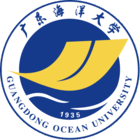详细信息
文献类型:会议论文
英文题名:A low-power water quality monitoring system and prediction model
作者:Li, Yangde[1];Xie, Zaimi[2];Mo, Chunmei[3];Chen, Yuge[3];Wang, Ji[3]
机构:[1]Guangdong Telecommun Planning & Design Inst Co, Consulting Dept, Zhanjiang, Peoples R China;[2]Guangdong Ocean Univ, Sch Math & Comp Sci, Zhanjiang, Peoples R China;[3]Guangdong Ocean Univ, Sch Elect & Informat Engn, Zhanjiang, Peoples R China
会议论文集:IEEE 24th International Workshop on Multimedia Signal Processing (MMSP)
会议日期:SEP 26-28, 2022
会议地点:ELECTR NETWORK
语种:英文
外文关键词:Water quality monitoring system; LoRa plus SG; GRU; PCA; K-means
外文摘要:A low-power water quality monitoring system is proposed to promote the development of offshore aquaculture informatization and realize intelligent monitoring of the offshore aquaculture environments. The STM32F103C8T6 controller is used to collect information such as light, temperature, humidity, and pH at regular intervals, and transmit the data to the cloud monitoring platform through LoRa+5G technology to realize remote monitoring of multi-area environmental information. An improved K-GRU prediction model is established by combining deep learning and an improved K-means clustering algorithm. The model to PCA algorithm and K-means clustering algorithm to achieve the selection of water quality key parameters, and its data as the output of the network input module; based on this input to the noise reduction module for noise reduction processing, the noise reduction data input to the network learning module for training and learning, the use of cross-validation and network search method to optimize the network parameters and structure, the trained prediction model predicts the key parameters of water quality. The accuracy and reliability of the system's marine environmental information collection and the effectiveness of the water quality key parameter prediction models are verified by example. Compared with the traditional K-GRU prediction model, RMSE is reduced by 5.6%, MAPE is reduced by 10.9%, and R2 is improved by 0.94%, which can meet the practical needs of offshore aquaculture water quality monitoring and prediction.
参考文献:
![]() 正在载入数据...
正在载入数据...


